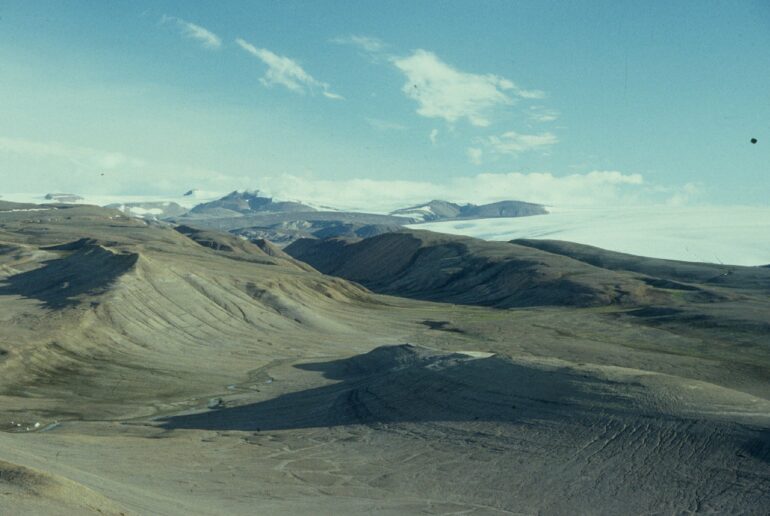In a new study, scientists describe three new, but long-extinct, walnut species on an island above the Arctic Circle. The fossils were discovered further north than any known walnut species, living or extinct, and represent some of the oldest-known records of this group. The work is published in the International Journal of Plant Sciences.
Today, the Canadian island of Axel Heiberg is a frozen desert devoid of nearly all life. But 45 million years ago, it supported a lush rainforest on the shores of the Arctic Ocean. Since then, the forest has been buried first beneath layers of sediment, then accumulated ice, leaving it frozen in time.
“When you walk into the site, the first thing you notice are these big stumps, a meter or more in diameter, and they’re still rooted in the soil that they grew in. It’s completely out of place. The closest living trees are 3,000 kilometers away,” said study co-author James Basinger, professor emeritus of geological sciences at the University of Saskatchewan.
The stumps are so conspicuous, they can be spotted from the air. In 1985, staff from the Geological Survey of Canada discovered the Axel Heiberg fossil forest while conducting a survey of the area from a helicopter. A year later, paleobotanists returned to the site and found fossils unlike anything they’d seen before.
“There aren’t really that many places around where you can go to see fossils that are preserved that well,” said Steven Manchester, lead author of the study and curator of paleobotany at the Florida Museum of Natural History.
In most cases, fossilization is characterized by organic matter being replaced with minerals over time. In other cases, organic matter is heated and compressed into coal or burned in forest fires and preserved as charcoal. But this isn’t the case with the Axel Heiberg fossils. The wood, leaves, cones, nuts and fruit are seemingly unchanged. This unique form of preservation is referred to as mummification, and it only takes place under a very specific and rare set of circumstances.
“Things can be broken down by bacteria and fungi, they can be rumbled along in a riverbed and destroyed; there are lots of ways of losing the material before it becomes fossilized,” Basinger said. But the ancient forests on Axel Heiberg were buried rapidly under swamp and lake sediments. As the global climate cooled, these processes were slowed.
Basinger was among the first researchers to study the forest. The Arctic’s barren surfaces and strong winds made it remarkably easy to collect specimens. “You can see a few fossils on the surface and pick what you can. But you go back next year, when there’s been a little erosion, and there’s a few more on the surface. Over a number of years, you can actually get a large collection,” he said.
The walnuts had been eroded from the soil and were sitting on the surface. “In one case, the walnuts are concentrated at one spot, possibly cached there by animals,” Basinger said. Some of the fossil nuts also have gnawed holes, indicating they were a food source for local animals.
Over a period of fifteen years, Basinger and his colleagues


